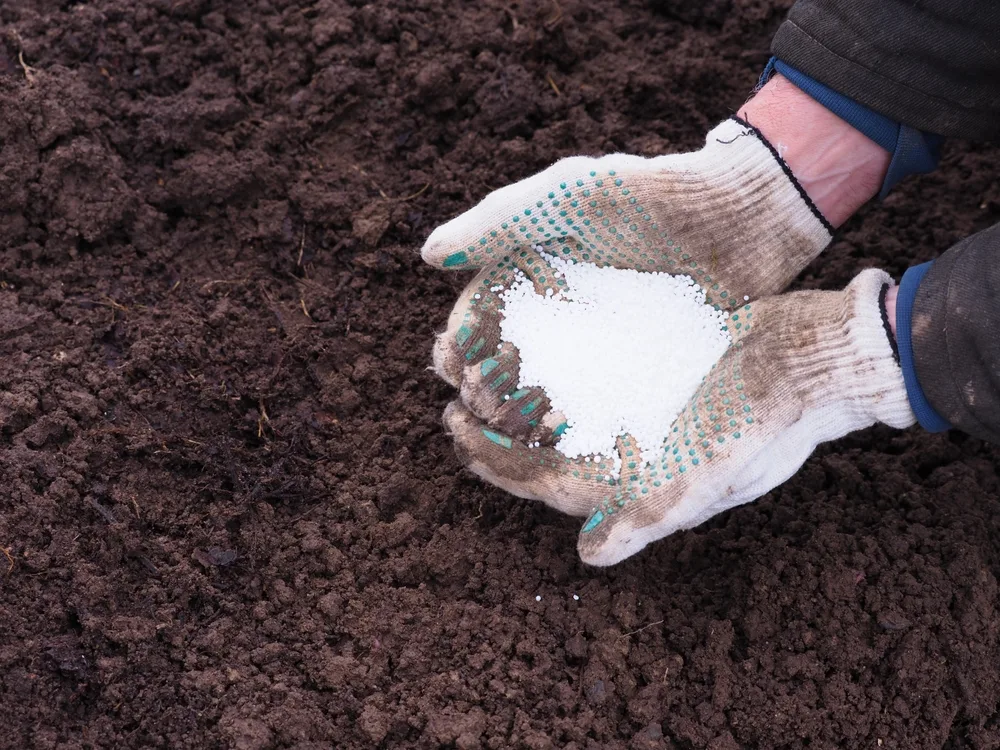Nitrogen is crucial for plants because it’s a big part of chlorophyll, the stuff that helps plants do photosynthesis.
Nitrogen is also a big part of amino acids. Without these, plants won’t grow well and will eventually die. So, it’s important to know how to give soil nitrogen to help your plants grow, whether they’re pretty plants or ones you can eat.

But not all nitrogen is the same. This review of nitrogen sources and products will help you choose the right nitrogen for your crops.
Unless it says something different, use the instructions on the product label to know how much to use.
How to Know If Your Soil Needs Nitrogen
Before you give your plants more nitrogen—or any other plant food—make sure they really need it. Too much nitrogen isn’t good for plants or the environment because it can wash into water and hurt plants there.
If you’re dealing with a big area like a vegetable garden, the best way to know if you need nitrogen is to test the soil. For single plants, that’s not always easy. But before giving a sick-looking plant more nitrogen, ensure other things aren’t causing the problem.
Signs that your soil needs nitrogen include yellow leaves, no flowers or fruit, frequent sickness, or poor growth.
When to Add Nitrogen
It’s best to add nitrogen in the spring and fall when plants are starting to grow. Don’t add it in the hot summer. The only exception is slow-release things like manure and compost, which you can add anytime.
Manure
All manure contains nitrogen and two other plant foods, phosphorus and potassium, but there are differences between the kinds of manure. Chicken manure has the most nitrogen, followed by horse and cow manure.
New manure needs to sit and rot for at least six months to a year before it can be used in the garden. If you can’t wait, you can buy old manure in bags from a garden store.
For 100 square feet, use 200 pounds of cow manure, 70 pounds of chicken, or 65 pounds of horse manure. The best time to add manure is in the fall.
Biosolids
Biosolids are recycled materials from waste treatment plants. There are two kinds: heat-dried and Class A. Both are heated to kill germs. Class A is the safest, but be careful because biosolids can contain bad chemicals called PFAS.
Compost Tea
If you’re making compost at home, you can soak the compost in water to make homemade nitrogen food for your plants. This method is best for small things like pots, but you still need to give your plants more food. It’s just a quick fix when you don’t have regular food.
Animal Products
Fish poop, or fish food, is a quick plant food made from fish stuff. It works fast but smells bad.
Blood powder is made from dead animals. It comes in bags. Dogs like it, so mix it in the soil if you have a dog.
Guano is a bird or bat poop.
Nitrogen-Making Plants
The best way to increase nitrogen in your soil is to plant certain plants, like peas, beans, or special plants that help.
These plants have special bacteria on their roots that take nitrogen from the air and turn it into nitrogen that plants can use. Once the bacteria don’t need the nitrogen, the plants can use it.
Commercial Food
Food with all three plant foods is best. For lots of nitrogen, get food with a big number first. Most food mixes fast and slow food to help plants fast and for a long time. Look at the label to see how much nitrogen is in it.
Not Natural Food
Food made from minerals like ammonium nitrate, calcium nitrate, or ammonium sulfate is good for lawns. These minerals dissolve in water fast, so plants get them right away. But if you use too much, it can hurt the plants.
Fake Nitrogen
Fake nitrogen comes mostly as urea or urea mixtures. Urea works fast. Sometimes it’s mixed with other stuff or has a cover to make it work slowly. How fast it works depends on how thick the cover is, the temperature, and how wet the soil is.
Grass Clippings
Did you know grass clippings have lots of nitrogen? When they break down, they give nitrogen to the soil. This is an easy way to give your plants more nitrogen. Just put them around your plants.
Coffee Grounds
Coffee grounds have nitrogen too, but if you put them in the soil, you need to give your plants more nitrogen. The tiny things in the soil that break down the coffee grounds need nitrogen too. Adding more nitrogen helps your plants get what they need while the coffee grounds break down.
